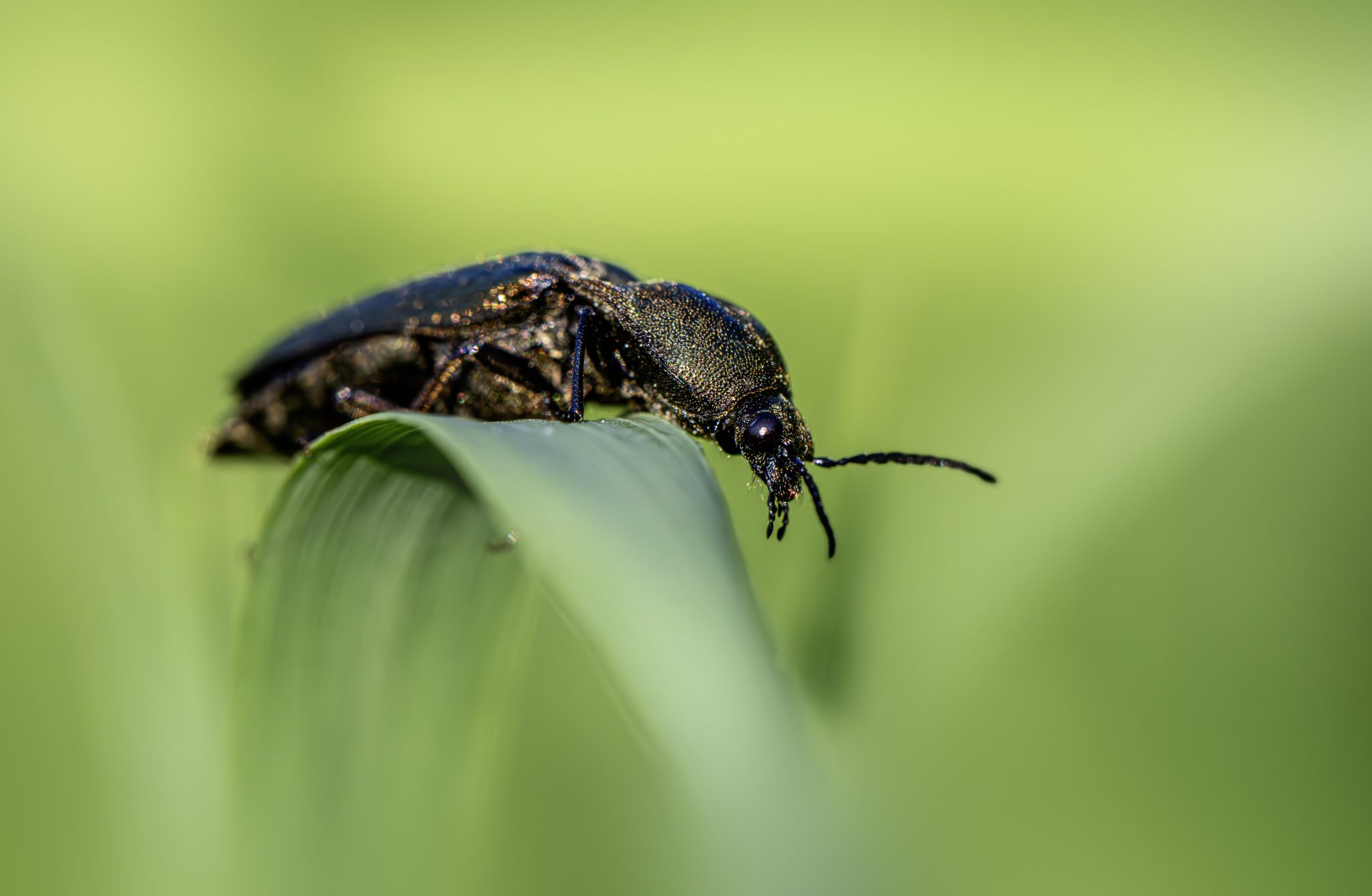Here’s a detailed natural history and identification overview of the Campsosternus auratus, one of Europe’s most striking click beetles with a brilliant metallic sheen. 🌈🪲
🪲 Campsosternus auratus
Common name: Golden Click Beetle
Scientific name: Campsosternus auratus (Drury, 1773)
Family: Elateridae (Click Beetles)
Genus: Campsosternus
🌍 General Overview
The Golden Click Beetle (Campsosternus auratus) is a large, metallic click beetle found in parts of southern and central Europe, extending into western Asia.
It is one of the most beautiful members of the click beetle family (Elateridae), known for its iridescent coloration, which can shimmer in hues of green, copper, and violet depending on the light.
The species is rare and localized, favoring old, decaying forests with abundant rotting wood, especially oak, beech, or pine.
🧬 Identification
| Feature | Description |
|---|---|
| Length: | 20–30 mm (one of the largest European click beetles) |
| Coloration: | Brilliant metallic green, golden, or coppery sheen; some individuals show violet reflections |
| Shape: | Elongate and flattened; characteristic click beetle outline with parallel sides |
| Pronotum: | Strongly convex with pointed rear corners |
| Elytra (wing covers): | Metallic, finely striated with longitudinal grooves |
| Antennae: | Serrated, moderately long |
| Legs: | Dark metallic greenish or bronze |
| Ventral side: | Often more bronze or copper-colored |
🆔 Key ID feature: The iridescent metallic coloration and large size make Campsosternus auratus unmistakable among European click beetles.
⚙️ Behavior and Ecology
- Activity: Mostly nocturnal or crepuscular; often attracted to light sources at night.
- Defensive behavior: Like other click beetles, it can “click” itself into the air using a special spine-and-groove mechanism on its thorax — useful for flipping over or startling predators.
- Flight: Strong and noisy when disturbed.
- Lifespan: Adults live a few months, mainly in late spring to midsummer.
🪺 Life Cycle
| Stage | Description |
|---|---|
| Eggs: | Laid in decaying wood or soil near rotting logs |
| Larvae: | Long, cylindrical, and tough-skinned (“wireworms”); golden-brown color |
| Diet (larvae): | Predatory or saproxylic — feeding on decaying wood and small invertebrates within |
| Larval development: | 2–3 years, depending on climate and food availability |
| Pupation: | Occurs in the wood or soil chamber in late spring |
| Adults: | Emerge from May to July |
🌲 Habitat
- Preferred habitat: Old, mature deciduous and mixed forests, especially those with:
- Fallen and rotting logs
- Hollow trees and deadwood
- High humidity and shade
- Microhabitats: Larvae live within decayed trunks and stumps, particularly of oak, beech, or pine.
- Elevation: From lowlands up to mid-mountain forests (approx. 1,500 m).
🧭 Distribution
- Geographic range:
Found sporadically in southern and central Europe, including:- France
- Italy
- Austria
- Czech Republic
- Slovakia
- Hungary
- Balkans
- Extends east through Turkey, the Caucasus, and into western Asia.
- In Northern Europe: Extremely rare or absent; most northern records are historical.
📉 Conservation Status
| Category | Details |
|---|---|
| IUCN Red List (Europe): | Near Threatened (NT) or Data Deficient in some regions |
| Population trend: | Declining regionally due to loss of old-growth habitats |
| Main threats: | Logging, removal of deadwood, and loss of mature forests |
| Conservation actions: | Protecting old woodland stands and leaving deadwood to decay naturally |
This beetle is considered a bioindicator species of ancient woodland ecosystems.
🧠 Interesting Facts
- The iridescent color is structural, caused by microscopic layers that reflect light, not by pigment.
- It is one of the few click beetles that can rival jewel beetles (Buprestidae) in brilliance.
- The genus Campsosternus is mainly tropical; C. auratus is its only European representative.
- When handled, it can make an audible “click” and leap several centimeters into the air.
📊 Summary Table
| Trait | Description |
|---|---|
| Scientific name | Campsosternus auratus |
| Common name | Golden Click Beetle |
| Family | Elateridae |
| Length | 20–30 mm |
| Coloration | Metallic green, copper, or gold |
| Habitat | Old deciduous forests, rotting wood |
| Larval diet | Saproxylic or predatory in decaying wood |
| Adult activity | May–July, nocturnal |
| Distribution | S. & C. Europe to W. Asia |
| Conservation status | Near Threatened (regional) |
Views: 214
Subscribe to the newsletter:
